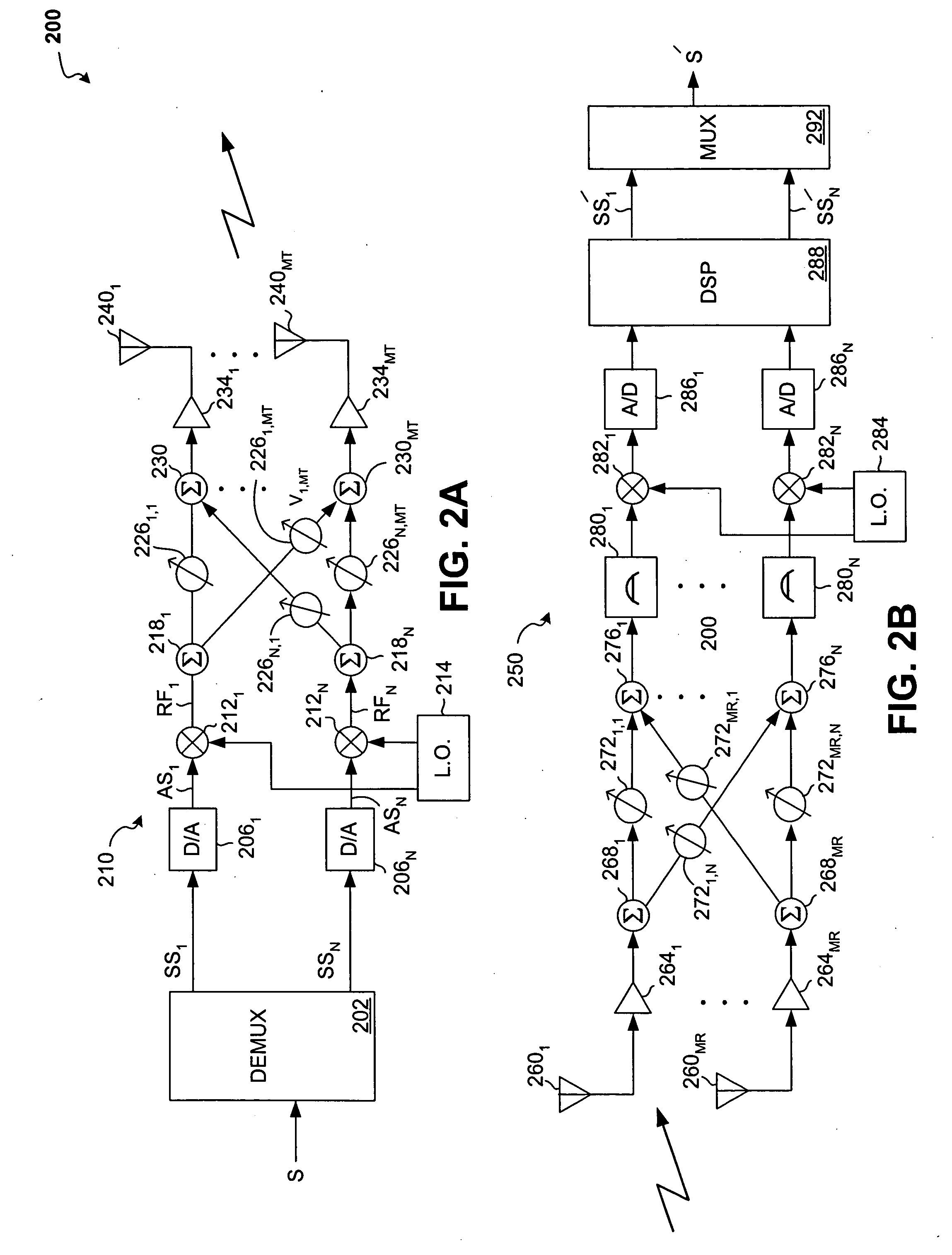Weight generation method for multi-antenna communication systems utilizing RF-based and baseband signal weighting and combining based upon minimum bit error rate
a multi-antenna communication system and rf-based technology, applied in the field of communication systems, can solve the problems of increasing the cost of providing a separate rf chain for each transmit and receive antenna, affecting the optimal performance of the system utilizing rf weighting and combining, and affecting the overall system cost and power consumption. achieve the effect of minimizing the output bit error rate of the receiver
- Summary
- Abstract
- Description
- Claims
- Application Information
AI Technical Summary
Benefits of technology
Problems solved by technology
Method used
Image
Examples
example 1
SC SIMO OFDM System
[0117] As a first example, a SIMO OFDM system in a noise-limited environment using one transmit antenna and two receive antenna elements is considered. The resulting BER and packet error rate (PER) curves as a function of signal-to-noise ratio (SNR) are represented in FIGS. 8A and 8B, respectively. The results of FIGS. 8A and 8B are predicated upon the use of BPSK modulation and no coding (i.e., “mode 10”), a channel model “A” (50 ns rms delay spread, 0.5 antenna correlation), and a fitting function of tanh to approximate the applicable BER.
[0118] As shown, two curves representative of two different cases of simulated annealing are presented in FIGS. 8A and 8B. Specifically, “SIMO1×2anneal” represents a search based upon simulated annealing using a fitting function of tanh. “SIMO1×2anneal-remember-min” is the same search but the solution that minimizes the BER is stored at each iteration. That is because there is some randomness associated with simulated anneali...
example 2
[0128]FIG. 9 illustratively represents the PER performance as a function of SNR for an n×n SC MIMO OFDM system operative within a noise-limited environment. Results are shown both for the case of n=2 and n=4. The results of FIG. 9 assume the use of BPSK modulation, and a coding rate of ½ (i.e., mode 1 of 802.11a standard). It is further assumed that a channel model characterized as “channel A” (i.e., 50 ns rms delay spread, 0.5 antenna correlation) is utilized, and that the fitting function is tanh.
[0129] A description of the system and weight computation approach corresponding to each of the curves in FIG. 9 is given below:
[0130] SISO: This curve corresponds to a single-input single output system using only one antenna at the transmitter and receiver.
[0131] SIMO1×2sel: This curve corresponds to a SC-SIMO system where only one receive antenna element is selected among a set of two elements. The selection is made based on the maximum average receive input SNR. ...
PUM
 Login to View More
Login to View More Abstract
Description
Claims
Application Information
 Login to View More
Login to View More - R&D
- Intellectual Property
- Life Sciences
- Materials
- Tech Scout
- Unparalleled Data Quality
- Higher Quality Content
- 60% Fewer Hallucinations
Browse by: Latest US Patents, China's latest patents, Technical Efficacy Thesaurus, Application Domain, Technology Topic, Popular Technical Reports.
© 2025 PatSnap. All rights reserved.Legal|Privacy policy|Modern Slavery Act Transparency Statement|Sitemap|About US| Contact US: help@patsnap.com



